America Trivia Party Game Review
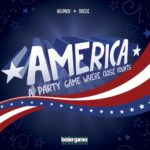
How long is the Golden Gate Bridge?
What’s the annual attendance at Disneyland?
People in which state listen to Christmas music the most?
When did Butch Cassidy form the Wild Bunch?
How many movies did Ronald Reagan appear in?
You may not know the answers to these questions. But that’s perfectly okay in the new trivia party game America by Bezier Games.
Because in America close counts!
America is one of the games I first discovered and played at Gen Con 2016 and is one that I enjoyed the most.
It’s also a game I’ve been very keen on getting ever since.
Thanks to the folks at Miniature Market, we’re now having fun playing America as a family.
If you were to ask us if we’re trivia fans, the clear answer is “no”.
But America is a trivia game that doesn’t feel like a trivia game. The variety of questions and the way questions are answered is so unique that it’s a lot of fun.
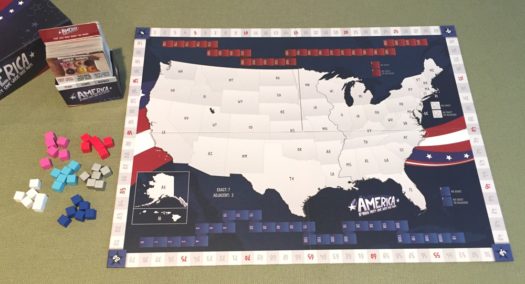
How to play America
Like in so many board games, in America, players compete to earn the most points. They do this by placing their colored player markers on various spaces on the game board that answer questions to a wide variety of topics.
The best part is that players don’t have to know the right answers to score points. As long as they’re close, they can do well.
We’ll show you how…
Set up
First choose which side of the game board you want to play on. One side of the game board has abbreviations of each state labeled while the other side leaves those off.
Each player places one of their colored markers at the start of the score track and takes the other 5 for their supply.
That’s all there is to it and you’re ready to play.
The Topics
There are 6 rounds in a game of America and the start player changes in a clockwise direction each round.
The start player takes the box of America Cards and chooses one side to read from. Because these topic cards are double-sided, there are always 2 topic options for the player to choose from.
Without removing the card from the box, the player reads all 3 questions on the topic card.
The first question will relate to a Year. The second question relates to a State. And the third question relates to a Number.
For example, for the topic Dunkin’ Donuts, the questions are: Dunkin’ Donuts first opened, Madonna worked at Dunkin’ Donuts, and Beans needed for a pound of Dunkin’ coffee.
Since the person who reads the question is the one who get to choose the topic card, they don’t get to answer first. Instead, the player to their left will be the first to place a marker.
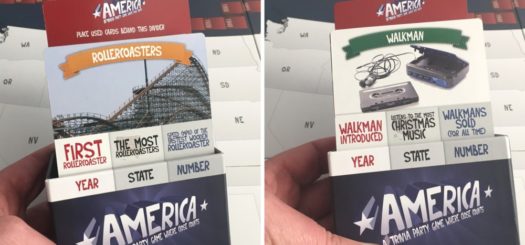
Player Turns
Beginning with the player to the left of the start player and going clockwise, each player places 1 of their markers on an empty space on the board.
They can choose whether to place on the Year bar, on a State, or on the Number bar.
The Year bar at the top of the board begins at 1492 and the last space is 2015. The Number bar at the bottom of the board begins at 0 and the last space is 1 Billion. When placing on these bars, each space includes the number shown on it as well as all numbers between that and the next space on the track.
For example, placing on the Year 1875 space covers the years 1875-1899 (up to the next Year space of 1900).
So players don’t need to know the exact year. As long as they get the range correct, they’ll get points.
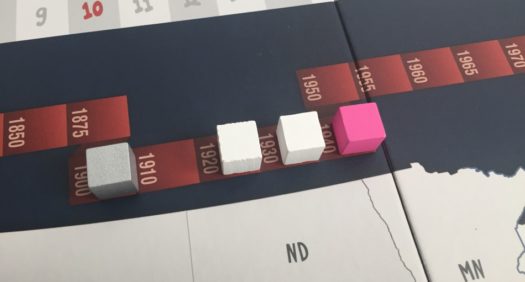
For the State questions, each topic card actually indicates whether the answer is East or West of the Mississippi River (shows half of the US shaded).
A player may only place one marker at a time.
For each of the 3 options on the board (Year, State, Number) there are also two related spaces for “No Exact” and “No Exact or Adjacent”. Players can place their markers on these spaces as well if they feel no one has placed markers on the correct spaces on the states or number bars.
Once a player has placed 1 of their markers, the next player can place a marker. After each player has placed their first marker, players may place another marker on any empty space in turn order or pass.
Thus, players will get the chance to place multiple markers for each topic. But they just have to wait until it comes around to them again.
Players can also place their subsequent markers on the same area of the board as their previous markers. For example, if they placed one of their markers on Alabama, they can also place another marker on Georgia as long as that state is still empty when it comes back around to their turn.
It keeps going around like this until all players have passed. Then the card is scored.
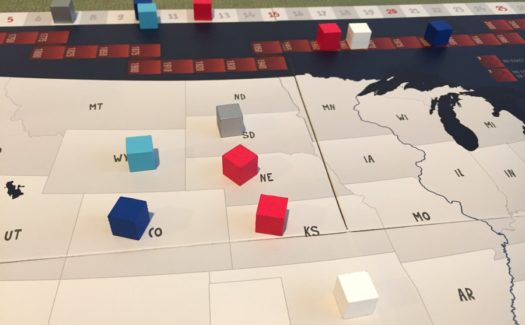
Card Scoring
The America Card is now pulled out of the box and the answers are read.
For each correct answer, the player who placed a marker on that space will score 7 points.
Each space adjacent to the correct answer will also score 3 points.
While on the Year and Number bar, there will only be 2 spaces adjacent to the correct answer space, on the State map there may be many adjacent spaces.
For example, if the correct answer is Ohio, that means Michigan, Indiana, Kentucky, West Virginia, and Pennsylvania are all adjacent. And markers in all of those adjacent states will score 3 points each.
If no one placed a marker on the exact (correct) answer for each section and a player placed a marker on the “No Exact” space, they will score 3 points.
If no one placed a marker on the exact answer or any adjacent space and a player placed a marker on the “No Exact or Adjacent” space, they will score 7 points.
(Those spaces on the board both show a 3 and a 7 in them so it’s easy to remember how they score.)
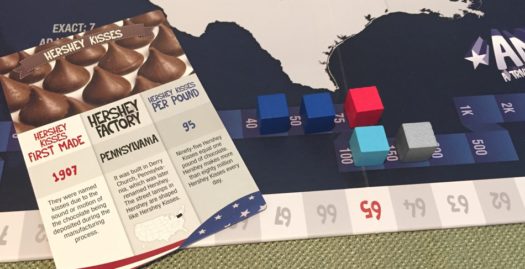
End of Round
Players move their score marker along the track based on how many points they scored that round.
Markers that scored points are given back to the players.
Any markers placed on the board that didn’t earn points that round are moved off of the board to a “non-scoring” supply pile.
At the end of each round, each player may take back into their supply one of their markers from the “non-scoring” supply pile. If a player has fewer than 3 markers in their supply, they can refill up to 3 markers. Thus, at the start of each round all players will have at least 3 markers they can use for placing their guesses to the next topic.
The card just scored is then placed in the box behind the red divider in the center of the box facing the same way. That way, it will eventually work its way to the front of the other side of the box with the other side of the card facing out.
It’s a very cool way for the 320 topics to get rotated through play.
End of Game
After the 6th round of scoring, the player with the most points wins the game!
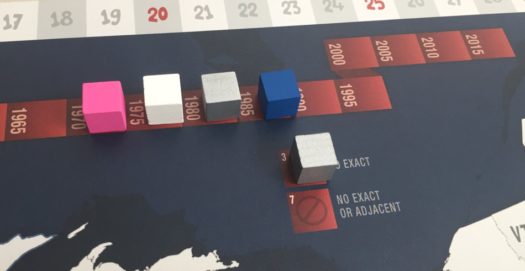
Can the whole family enjoy America?
Since America is a trivia game, kids aren’t going to do very well in the game. The suggested age for the game is 13+ and that’s pretty accurate.
It’s not that they won’t understand how to play the game, but rather they won’t have any good reference points to go off of.
As far as teens and adults go, we think everyone will enjoy playing America.
Even if they’re not fans of trivia games in general, America offers a unique game play that is very engaging and approachable by all.
After all, players don’t need to know the exact answers to enjoy the game and do well for a couple reasons.
First is that players get points for being close to the correct answer. So if you know that other players know a topic well, you can place your markers next to theirs. And if they’re correct, you’ll get points as well.
And when placing markers on the Year and Number bars you don’t have to know the exact numbers. You just have to get the right range of dates or numbers to get points.
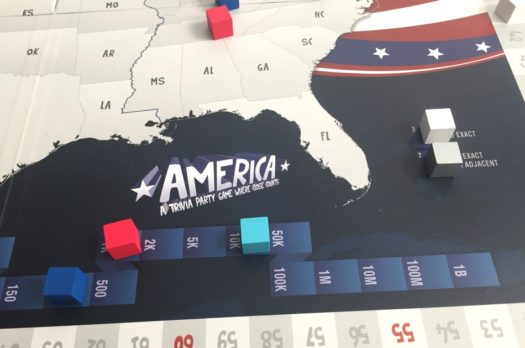
The second reason is that players who know a topic well may still be blocked out of the right answers. This aspect also deters players from trying to memorize the answers (the last thing you want someone to do with a trivia game anyway).
America has 160 double-sided America Cards. That means there are 320 topics. And with 3 questions for each topic, that brings the total to 960 individual stats. That’s pretty tough to memorize.
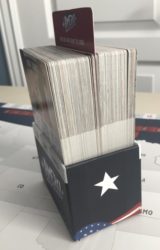
Yet, even if a player knows all the answers for a certain topic, they may not get a chance to put their markers on all the correct areas because players can only place one marker each turn.
For example, when the Civil War topic came up I was excited because I felt I knew the answers. But when my turn came around, I had to choose where to place my first marker. Should I put it on the Year (year the war ended), or on the State (location of first battle), or on the Number (states that seceded)?
In a 6 player game, the likelihood of getting a chance to place a marker on all 3 correct answers was very low. So I’d pick one and hope by the time it came around to me again some of the adjacent spaces to the correct answers would still be available to jump on as well.
It’s a great way for the points to be spread out among all the players for a close match throughout the 6 game rounds.
Another key point of this is having the start player change each round.
The start player gets to choose which of the two possible topics will be used for the current round. Yet that player will be the last in turn order to place their marker.
If I choose the card, then everyone else will get a chance to place their markers before me. So again, even if I choose a topic I know well, the correct spaces may be taken before it comes around to me for placing a marker on a correct space.
It’s a fantastic flow for a trivia game.
Big thumbs up for America.
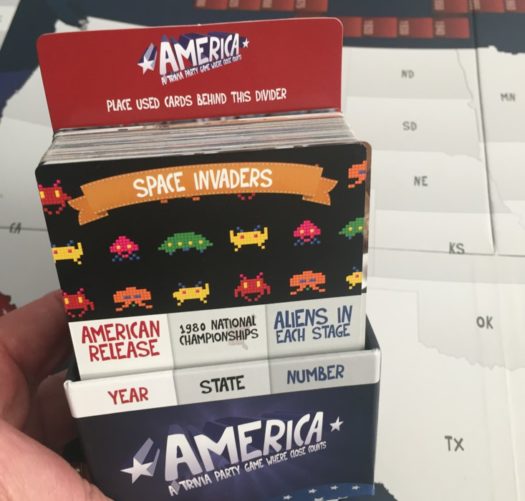
How does America score on our “Let’s Play Again” game meter?
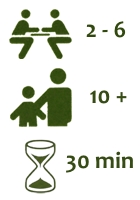 America scores high on our “let’s play again” game meter. It’s an easy game to play and can be played over and over without getting the same questions again.
America scores high on our “let’s play again” game meter. It’s an easy game to play and can be played over and over without getting the same questions again.
Since one game of America only covers 6 topics, it will take a long time to cycle through all 320 topics — giving us plenty of replay value.
But the biggest reason why America scores high is because it’s simply fun to play!
Not only are the topics on the America cards so varied, but the questions about them cover an interesting assortment of facts.
I don’t know how long it will take us to play through all 320 topics, but we’re up for the challenge!
Pick up a copy of America trivia game for your family.
We’d like to thank Miniature Market for the copy of America trivia game to review.

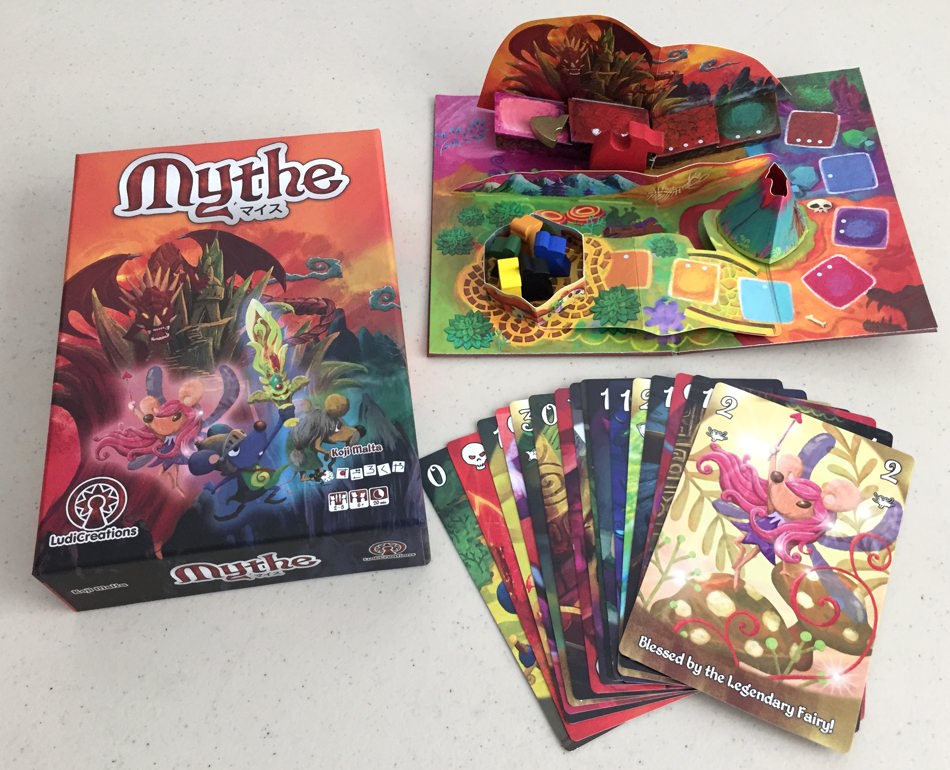
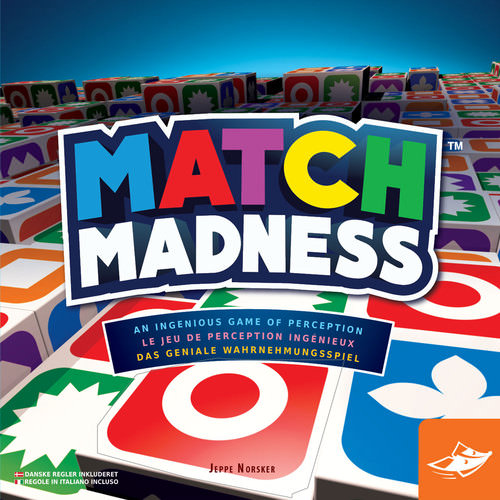
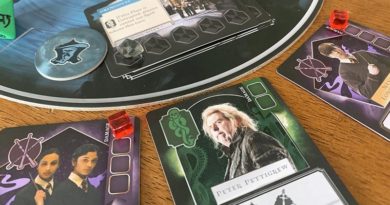
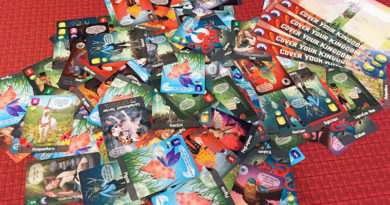
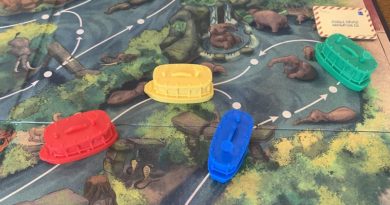
Sounds like a great build on “Whits and Wagers.” My family loves that game – but it also is better oriented towards older children with more education. I look forward to checking this out and challenging my kids on their American History / Pop Culture knowledge.
Keep the reviews coming. Thanks.